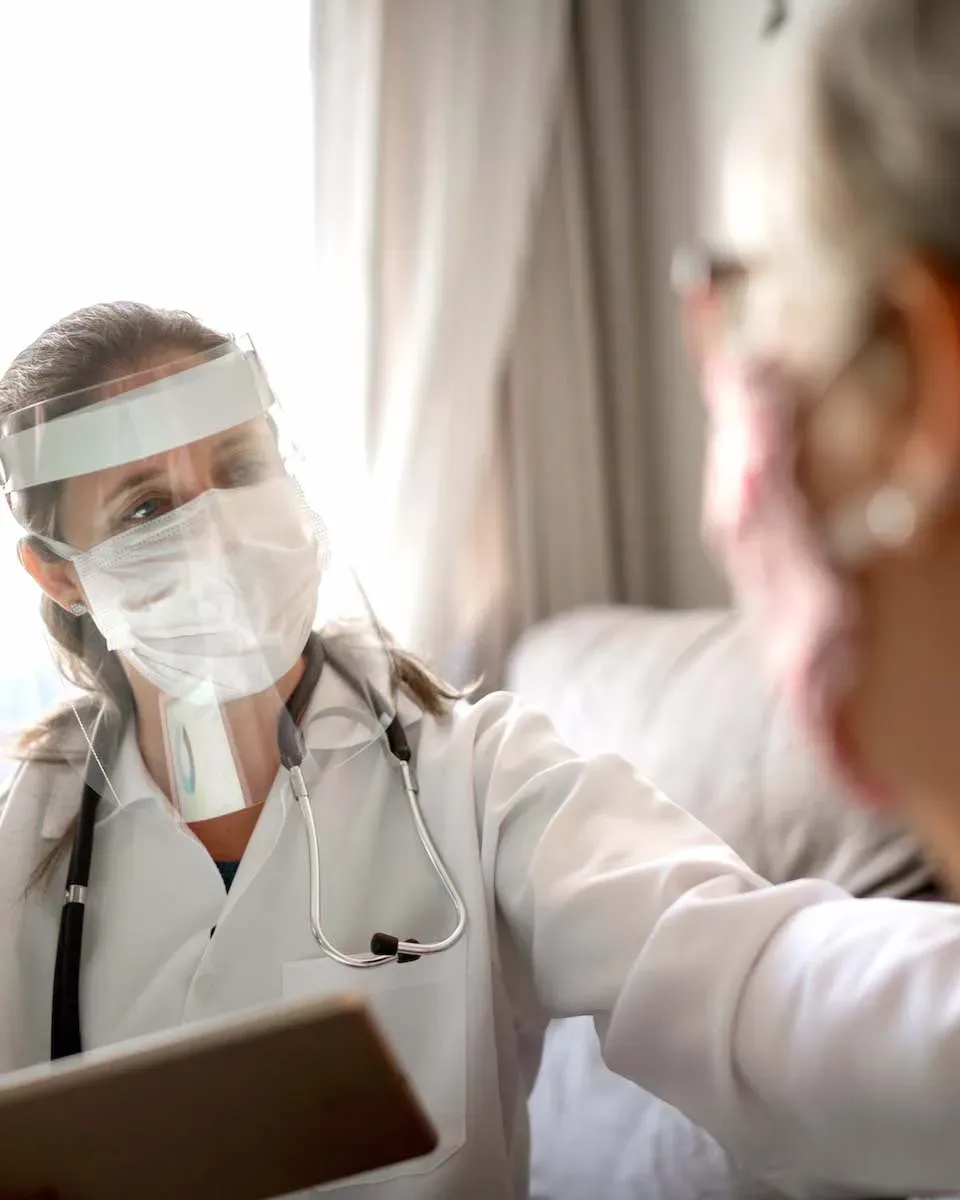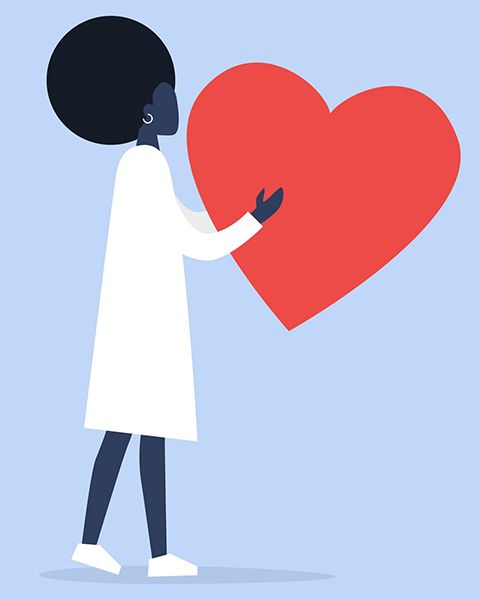
A Physician Assistant's Journey, From Burnout to Balance
Read one provider's burnout story and learn what experts say about causes and coping techniques.
September 24, 2020
The first time Physician Assistant Heather Tonga experienced burnout, she was working long hours at a rural clinic in Washington, and the word “no” wasn’t in her vocabulary.
“I was working all the time, and I also had little kids,” Tonga says. “I was on call a lot. I pretty much didn’t tell people ‘no,’ and I brought work home every day. I was really attached to that clinic.”
When Tonga finally did take some time off for a short trip, the clinic’s managers made some major equipment changes. When she returned and realized what they’d done, she quit.
When Tonga finally did take time off for a short trip, the clinic’s managers made some major equipment changes. When she returned and realized what they’d done, she quit.
“It was impulsive. I was really upset that they would do that,” Tonga says.
Even more surprising to her? The clinic accepted her resignation.
“I went through a period where I was depressed and anxious about having quit my job and not meaning to,” she says. “I went to counseling, and I took an anti-depressant for a year. It turns out the clinic actually worked without me. I wasn’t exactly as important as I thought I was. I learned that.”
Through counseling, Tonga says she realized she had been working too much and had become overly invested in her job.
During the early years of the COVID pandemic, Tonga was promoted to Clinic Medical Director for Providence Medical Group in Oregon. She says she was able to stave off burnout this time, before it got to a breaking point. Drawing on her hard-earned wisdom, she used lessons learned from her own experience to safeguard and protect her staff.
“I was working all the time, and I also had little kids. I was on call a lot. I pretty much didn’t tell people ‘no,’ and I brought work home every day. I was really attached to that clinic.”
~ Heather Tonga, Physician Assistant
The Signs and Symptoms of Physician Burnout
Burnout, according to the World Health Organization, is not classified as a medical condition. So what exactly is burnout? WHO describes it as a syndrome resulting from chronic workplace stress that has not been successfully managed. General burnout symptoms include:
- Feelings of energy depletion or exhaustion
- Increased mental distance from your job, or negative or cynical feelings related to your job
- Reduced professional efficacy
While physician burnout rates skyrocketed during the pandemic to a record high of nearly 63%, recent survey data from the American Medical Association shows the tide is slowly turning. In 2023, 48% of doctors reported at least one symptom of burnout, down from 53% in 2022.
But the fact that physician burnout rates are still so high shows there is much work to be done. The implications of physician burnout are numerous, from clinician error and low patient satisfaction to poor care quality and decreased healthcare access.
Dr. Ryan Dix, a behavioral health manager running resiliency programs at Providence Medical Group, says physician and provider burnout has some tell-tale symptoms:
- Fatigue
- Disrupted sleep
- Anxiety
- Low morale
- Doubt in abilities as a physician or APC
- Loss of spark or joy once found in practicing medicine
- Decreased sense of accomplishment
- Pessimistic view of the future
- Can progress into full-blown depression
The hallmark of physician burnout is a negative outlook — a cynicism — that often leads to a resistance to going to work, and a hesitancy to engage in work the way they once did.
“Providers who are burned out have really lost the joy that many of them bring to medicine,” Dr. Dix says. “The great part of our job is being able to help patients and serve patients. Burned out doctors and nurses lose the fire to do that.”
Common Causes of Physician Burnout
The causes of high physician burnout rates are well-studied and documented, and many health systems have implemented programs to address or mitigate its root causes. Common underlying causes of physician and advanced practice clinician burnout include:
- Rules and bureaucracy: Clinicians are surrounded by rules — from the government, insurance companies and hospitals, which limit the time they can spend with a patient.
- Overwork: The average U.S. physician works 50 hours a week, according to Medscape’s 2023 Physician Compensation Report.
- Computerization: In a recent study published by the National Library of Medicine, Primary Care physicians reported spending nearly six hours out of an 11.4-hour workday on electronic health records tasks.
- Loss of control: Many clinicians wish they had more autonomy and control over their schedules.
- Asymmetric rewards: Providers may receive an occasional, small amount of praise from patients and management, but when they make a mistake, consequences are often swift and severe.
- Not feeling valued: More work, sometimes for less pay, low morale and labor shortages have all contributed to the epidemic of physician burnout.
- Outside factors: Home life is usually a refuge for clinicians. When there are stressors in a clinician’s home or community, this can dramatically increase risk of physician burnout.
What Physicians and Health Systems Can Do to Decrease Burnout
While solutions to burnout are complex, they do exist, Dr. Dix says. It is possible to lower the physician burnout rates at your health organization.
“Healthcare workers are good at putting their heads down and continuing to do the work,” he says. “The biggest thing the individual provider can do is to look for the symptoms in themselves.”
The next step is to tap into pre-existing coping strategies. The human tendency is to get rid of the extras when life feels stressful, Dr. Dix says, “but the extras are what allow us to keep going. Bring back those basics, whether it’s exercise, sufficient sleep, eating right, reading a great book or talking with a friend.”
If these measures aren’t effective, Dr. Dix says accessing professional help is key, something that can be hard to do for healthcare workers. That’s why systemic interventions are so important, he says, to de-stigmatize physician burnout and make space for people to talk about it.
“Every hospital, region and clinic is different,” he says. “Leadership needs to ask themselves, ‘What approaches will help us?’ Start with an assessment of what is contributing to the environment of burnout. Do you need to allow providers more control over their schedules? Do you need to look at your workflows? Bring in people to help with your electronic health records? Create opportunities for connection and community?”
For providers, go-to coping strategies are critically important, says Dr. Dix. He encourages doctors, nurse practitioners and physician assistants to be intentional and creative in finding ways to combat burnout.
“Leadership needs to ask themselves, ‘What approaches will help us?’ Start with an assessment of what is contributing to the environment of burnout.”
~ Dr. Ryan Dix, Behavioral Health Manager, Providence Medical Group
Alleviating Physician Burnout: Work-Life Balance and Asking for Help
Heather Tonga took a multi-pronged approach to manage her burnout. She says being promoted to Clinic Medical Director just before the pandemic made it tough.
“I felt isolated,” she says. “I wasn’t able to meet with the leadership group. To socially distance, I had an office by myself, and I missed being around everyone.”
Again, just as she did at the start of her career, Tonga took stock and rebalanced. She remembered the advice from a physician she worked with when she was younger: Make a list of things that energize you and a list of things that drain you. Try to do more of what rejuvenates you and eliminate the drains as much as possible.
Her happy place is her large garden, where she spent as much time as possible. She used Providence’s Employee Assistance program for several counseling sessions to help with anxiety, and she picked up running, completing her first virtual 5K by clocking her own time.
She says she has a different perspective now than she had in her 20s.
“It’s important that we figure out how to take care of ourselves. I’ve been there before, and I don’t want to get burnout again, because I really love the work I do. Now I pay attention to the signals and get help if I need it.
“My advice to other providers would be, ‘Don’t push through. You’ve got to go home and take care of yourself. Have compassion for yourself.’ ”
Beyond Burnout: How PS&D Can Help
At Provider Solutions & Development, our goal is making sure the physicians and advanced practice clinicians we help hire are happy, both on the off the job. We recruit for Providence and more than 35 partners across the country, where physician well-being and a healthy culture are top priorities.
Are you ready to explore job opportunities where you might be more fulfilled? Reach out today to get started.


